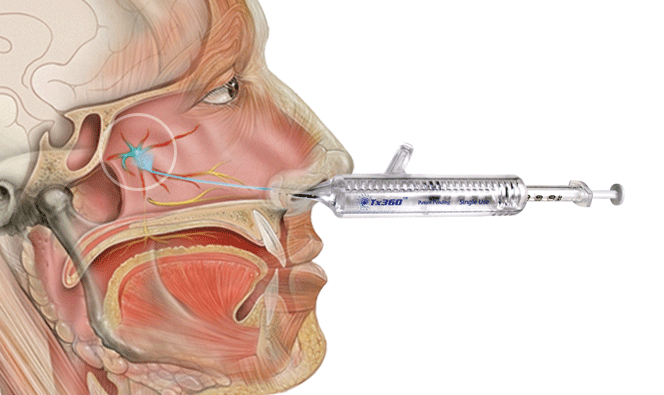Ever wonder why you have so many migraines? Or is its normal to have migraines too much?
Mayo Clinic wrote a great article about the symptoms and causes of migraines that you can read about here. Migraines are often undiagnosed and untreated. If you regularly have signs and symptoms of migraine, keep a record of your attacks and how you treated them. Then make an appointment with your doctor to discuss your headaches.
Even if you have a history of headaches, see your doctor if the pattern changes or your headaches suddenly feel different.
See your doctor immediately or go to the emergency room if you have any of the following signs and symptoms, which could indicate a more serious medical problem:
- An abrupt, severe headache like a thunderclap
- Headache with fever, stiff neck, confusion, seizures, double vision, numbness or weakness in any part of the body, which could be a sign of a stroke
- Headache after a head injury
- A chronic headache that is worse after coughing, exertion, straining, or a sudden movement
- New headache pain after age 50
How does City Health Services come into play, and what do they offer? To answer your question, it’s a protocol that includes MiRx.

What is MiRx®?
The MiRx protocol is a headache and migraine treatment program, and it is designed to treat a large variety of facial pain and head pain.
The process is made up of two parts:
- Medical component: a spray of local anesthetic, usually lidocaine, to the Sphenopalatine Ganglion (SPG), a nerve cluster in the nasal cavity. This is done with the TX360® applicator (not a needle).
- Physical component: physical therapy, ergonomic and lifestyle changes, dietary changes, chemical imbalances, etc.
The first part stops the pain reaction directly through the nervous system. The second part rehabilitates any underlying conditions, reducing or eliminating the need for future medical treatments.
As noted above, the MiRx applicator is not a needle but a simple nasal spray. The TX360 nasal applicator is a soft, flexible filament that sprays the anesthetic agent directly onto the SPG. The SPG is deeper inside the nasal cavity, where a regular nasal spray cannot reach.
The physical component may include weight loss options, cranial sacral therapy, myofascial release, chiropractic adjustments, massage therapy, and more. Physical medicine helps relieve long-term head pain, facial pain, and migraine relief.
The MiRx protocol is an excellent alternative to pain medication, which can be costly, have dangerous side effects, and often only masks the pain. Most patients report a reduction or elimination of pain with the nasal applicator within 2 to 8 seconds.
MiRx is FDA approved and only available from select practitioners. It has been clinically proven to provide a long-term reduction in frequency, duration, and pain level, including eliminating headaches, migraines, and facial pain. MiRx is also safe for use on pregnant women.
What types of pain relief does the MiRx® protocol provide?
Scientists and doctors have known for over 100 years that the SPG nerve cluster controls headaches, migraines, and facial pain. The challenge has been reaching this nerve cluster non-invasive, and the MiRx protocol accomplishes this painlessly and quickly.
MiRx works to treat classic migraines (with auras), common migraines (without auras), and other types of headaches, head pain, and facial pain. This includes:
- Basilar artery: Hormonal deviation migraines, often associated with menstruation. It can cause incoherence and loss of balance.
- Hemiplegic: Similar to the sensation of a stroke, this migraine can cause dizziness, numbness, and temporary paralysis to one side of the body.
- Ophthalmoplegic: Also the sign of an aneurysm, this migraine temporarily paralyzes the ocular muscles with vision fluctuations.
- Retinal: Also known as an ocular migraine, in only one eye, you will see flashes of light, zigzag patterns, shimmering spots, or blindness. It may be accompanied by numbness on the face or head.
- Status migrainosus: Also called an intractable migraine, this is a migraine that lasts longer than 72 hours, accompanied by pain and nausea. Hospitalization may be required, especially for dehydration if vomiting is constant.
It is also designed to treat tension headaches, cluster headaches, trigeminal neuralgia, atypical face pain, and cervicogenic headaches.
What can I expect during a treatment?
On your first visit, you’ll consult with a healthcare provider, including a physical exam as needed. If you have not tried other methods, we will recommend even less invasive treatments first, such as chiropractic adjustments. If you have tried other methods without success or your head pain is very severe, you can expect we’ll recommend MiRx immediately.
For the best long-term migraine relief, we often recommend a MiRx treatment cycle of 2 applications per week for 4 to 6 weeks. If your case is acute, or chronic, or you experience immediate results after one treatment, we will adjust your treatment plan with you.
We will also prescribe a physical component based on your treatment cycle and needs. This will consist of exercises, chiropractic, and other medical services to address the underlying issue causing your headaches. We want to help your pain not recur due to triggers or habits.
After the treatment cycle is complete, most patients report a severe reduction in pain or total elimination of migraines, headaches, and face and head pain. We hope to help you, too, with these very treatable issues.